What happens when effects gets in the way of a story? Throughout modern visual culture's colored history, there are classic examples where stunning effects, massive setpieces, and bombastic sound design that have somehow managed to fail in carrying an entire production simply because the story was just well... ordinary.
 "I have a love of astonishing sights, of films that show me landscapes and cityscapes that exist only in the imagination, and ''Final Fantasy'' creates a world that is neither live action nor animation, but some parallel cyberuniverse."
"I have a love of astonishing sights, of films that show me landscapes and cityscapes that exist only in the imagination, and ''Final Fantasy'' creates a world that is neither live action nor animation, but some parallel cyberuniverse."-Roger Ebert
 Hmm... I just found an ol' copy of Final Fantasy: Spirits Within lying around the house, so I thought, why not? John Virata of the Digital Animator Community puts it that "...even though the characters were entirely computer generated, the skin tones, Aki’s flowing hair, without good story to keep things flowing, everything gets muddled." For awhile, you are led to believe that these characters are real people fighting aliens. Then the story gets in the way."
Hmm... I just found an ol' copy of Final Fantasy: Spirits Within lying around the house, so I thought, why not? John Virata of the Digital Animator Community puts it that "...even though the characters were entirely computer generated, the skin tones, Aki’s flowing hair, without good story to keep things flowing, everything gets muddled." For awhile, you are led to believe that these characters are real people fighting aliens. Then the story gets in the way."Seeing the film though, almost its not as bad as people say it is. And the funny thing is I sorta agree with a lot of what Roger Ebert said in the film. The film had this whole spirit aspect going on (hence the frickin' title) and while it can get really weird at times, I guess they had to have it cuz' it did bear the Final Fantasy title. Mr. Ebert commented in his old 2001 review, "The most realistic are probably Dr. Sid and Ryan. It all comes together into a kind of amazing experience; it's like you're witnessing a Heavy Metal story come to life." I agree... The story felt had that whole depressing post-apocalyptic motif/thing which I have seen in a lot of in my Heavy Metal mag collection.
"The company and its cadre of digital artists have proven that they can create some pretty impressive effects for film, and they have also proven that they aren’t as adept as they had thought in getting into the filmmaking business." The film was a international failure, garnering a hundred twenty million in losses. There was a plan to use the Aki character model/asset for other films in the future, but that planned quickly turned to dust. For shame.

 Whatever the case may be, the film is indeed a stunning piece of work. This opening dream shot was really an eye-opener, especially back in the beginning of the second millennium.
Whatever the case may be, the film is indeed a stunning piece of work. This opening dream shot was really an eye-opener, especially back in the beginning of the second millennium. And while you know that all the characters were fake, there was that... believability in that they exist in that world. Ebert notes that "Not for an instant do we believe that Dr. Aki Ross, the heroine, is a real human. But we concede she is lifelike, which is the whole point." I guess the only problem was the poor facial capture technology at the time. Lip synch was also pretty off and sometimes just plain bad at times.
And while you know that all the characters were fake, there was that... believability in that they exist in that world. Ebert notes that "Not for an instant do we believe that Dr. Aki Ross, the heroine, is a real human. But we concede she is lifelike, which is the whole point." I guess the only problem was the poor facial capture technology at the time. Lip synch was also pretty off and sometimes just plain bad at times.Imagine that these were the graphics that we could achieve in 2001. At the time of this writing, its 2007, and games are rendering all this stuff in REAL TIME! Thanks to leaps and bounds in processing power, games are reaching that quality with current generation Playstations and Xbox 360s. PC power is also pushing that barrier to photorealism with games like Farcry 2 and those uh... just about every other first person shooter in development at this time.
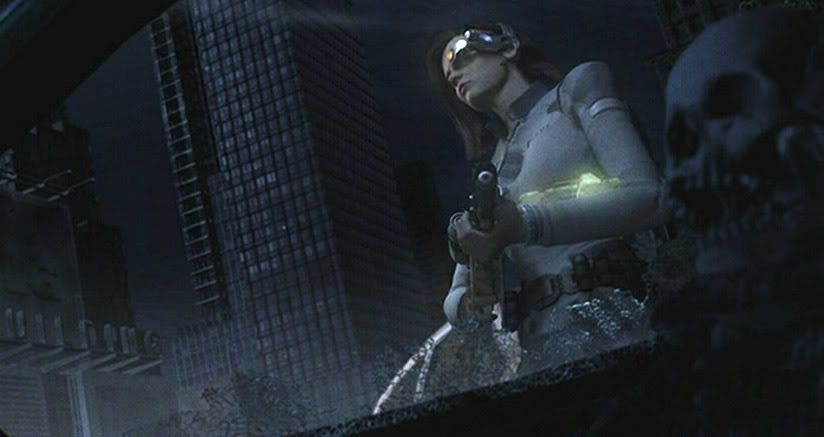
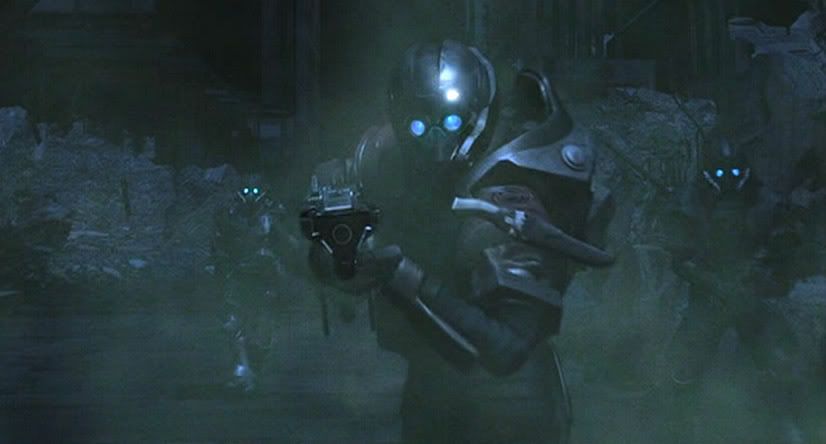 I was also really impressed with these trooper designs developed for the film. Nowadays, a lot of creative people have focused on this type of design aesthetic (is that the right jargon??) Halo and a bunch of other properties pioneered this craze, since they sold so damn well.
I was also really impressed with these trooper designs developed for the film. Nowadays, a lot of creative people have focused on this type of design aesthetic (is that the right jargon??) Halo and a bunch of other properties pioneered this craze, since they sold so damn well. I also liked this concept of the 'touch display' which was has been seen in many features to date, though I remember it most from the film 'Minority Report' starring Tom Cruise. I remember quite a bit of buzz about that aspect in that particular film.
I also liked this concept of the 'touch display' which was has been seen in many features to date, though I remember it most from the film 'Minority Report' starring Tom Cruise. I remember quite a bit of buzz about that aspect in that particular film.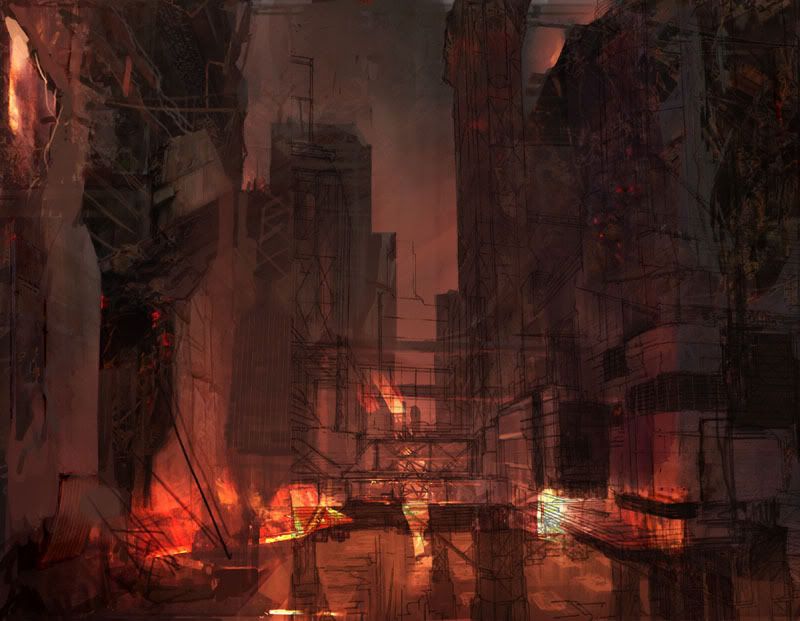
 So anyway, the film is indeed a triumph in design. Square USA brought in veteran concept designer Craig Mullins, who helped realize this Spirit's intricate worlds. The film's muted color scheme sorta made me wish for a wider palette, but I blame creative decisions...
So anyway, the film is indeed a triumph in design. Square USA brought in veteran concept designer Craig Mullins, who helped realize this Spirit's intricate worlds. The film's muted color scheme sorta made me wish for a wider palette, but I blame creative decisions...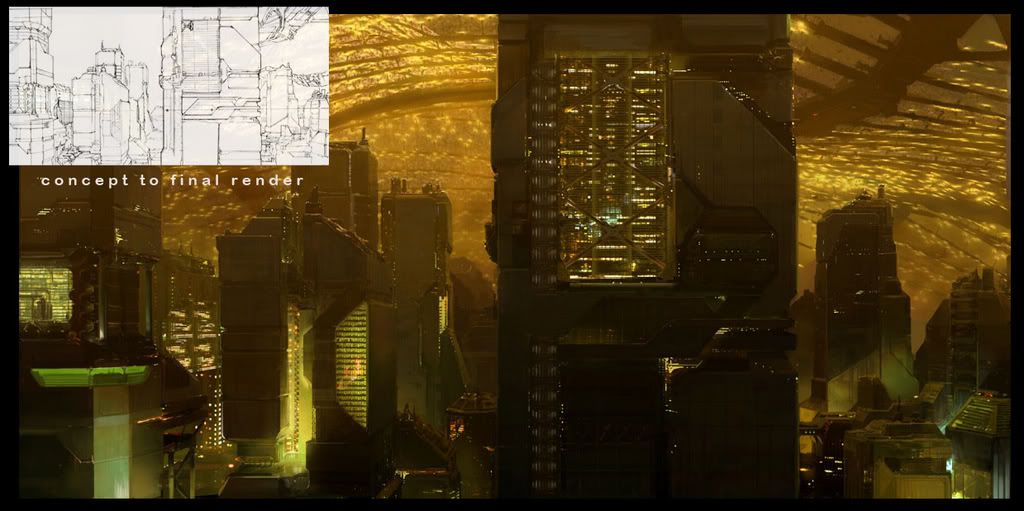
 Upon the film's release, people threw the term 'Hyper-real' around a lot due to the film's graphics. ‘Hyper-real’ is defined as a means of taking what's real and then putting something into it that makes something happen more than we’ve seen actually happen on our soil. In this case, its making this entirely believable world, yet unreal world. Well, whatever. I'm still impressed with this 2001 one-shot film. Despite bombing so bad, this whole 'hyper real' film making movement produced was still able to produce "wonderful" and "memorable" classics such as Final Fantasy: Advent Children and "Appleseed". More on those films in the future.
Upon the film's release, people threw the term 'Hyper-real' around a lot due to the film's graphics. ‘Hyper-real’ is defined as a means of taking what's real and then putting something into it that makes something happen more than we’ve seen actually happen on our soil. In this case, its making this entirely believable world, yet unreal world. Well, whatever. I'm still impressed with this 2001 one-shot film. Despite bombing so bad, this whole 'hyper real' film making movement produced was still able to produce "wonderful" and "memorable" classics such as Final Fantasy: Advent Children and "Appleseed". More on those films in the future.Wikipedia Entry
Final Fantasy Review
Final Fantasy in Hollywood
I've been browsing TV Tropes terminologies on modern visual culture and I think I have come to realize the importance of understand these ideas before proceeding with any form of concept work for my fan and original projects. It is at least important that I have these ideas on my blog so I will not lose focus.
We begin with the term to begin all other terms - 'Verse'
-Orson Scott Card
The Verse is usually referred to with a show or franchise identifier (such as "Buffyverse", "Whoniverse", "CSI-verse", etc.). It is a crafted combination of setting-elements that define the rules for how the world works and sometimes provides for sharing of characters and continuity across more than one series.
Many 'verses have a thriving life in the aftermarket, spawning books, movies, comics and fanfic.
Thus we move on, to a term coined by... Lucas? Nah.
Expanded Universe refers to everything that is not the primary medium. All that other stuff. This can create a schism in fans.
Schism? Golly!
This Star Trek reference is completely lost on me. I wonder why I never got into Trek... However, its a... good example?
 Even if it isn't canon, the Expanded Universe often serves as a place to apply Scotch Tape to the canon through RetCons; this may verge on professional-grade Fan Wank.
Even if it isn't canon, the Expanded Universe often serves as a place to apply Scotch Tape to the canon through RetCons; this may verge on professional-grade Fan Wank.
The term comes from Star Wars, which has an extensive Expanded Universe covering events before, during, and after the films. (However, this particular EU is much better defined than that of most fandoms. A fan can take all or none of it, whereas most EUs require picking and choosing from contradictory sources. Most, if not all, is in fact vetted by either George Lucas or one of his employees who can, and have, vetoed.)
Odd though that a different term is used in a favorite television series of mine called Robotech' - the term for derivative works is 'secondary continuity'. Honestly, the name itself kind feels out-of-date, and has some fairly negative connotations considering that franchise's history. But I digress. Just some fanboy nitpicking - who isn't guilty of that?
Some fun examples of professional grade fanwank, or just plain professional stuff from my source:
- A less well known example is the 1998 movie Soldier, which was written by the co-scriptwriter of Blade Runner, David Peoples. He has stated the movie to be a "sidequel" to Blade Runner, and the movie includes direct and visual references to the earlier film.
- Transformers. A bunchload of comic books. A number of text stories. A handful of video games. And that's not even counting that not all the cartoons are in the same continuity. Many fans are split over what the primary source really is: the original cartoon is named as such by most, but many others choose the original comic series instead, or the British version thereof, with mixing-and-matching becoming increasingly popular. The term canon is hard to apply here: It all happened, but didn't all happen in the same timeline.
- Halo's Expanded Universe is either created by staff from Bungie, the game studio behind the game, or under their control, and is integrated entirely into the overarching plotline. All of it is entirely canonical.
Sometimes an element from the Expanded Universe is so popular (or just so good) that it gets put into the officially continuity of the original medium. This is a Canon Immigrant.
Here's the concept of a Canon Immigrant. A real interesting one, this is.
The Expanded Universe is a wonderful place, where new ideas can frolic without having to worry about fitting into the canon.
However, sometimes an idea is so interesting that the people who create the canon decide it deserves to become "real". Thus, we have the Canon Immigrant, who is a character who was created and nurtured in another medium and, eventually, imported back into the original. Note that, often, surface details are brought in to play off a new movie or TV series; this isn't that. Rather, it's usually a completely new character, who over time becomes more and more popular with the fandom, often filling some niche that was never quite complete before. If they're successful enough, they'll be included in new entries in the Expanded Universe, cross-pollinating concepts.
With a notable example in science fiction:
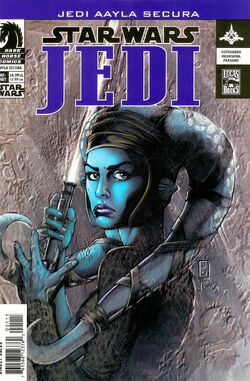
- Aayla Secura, a blue Twi'lek female Jedi established as a character in the Expanded Universe, got a few appearances in Star Wars Episode II: Attack of the Clones and a minor speaking role in Star Wars Episode III: Revenge of the Sith, reputedly after George Lucas saw some comic book art of her he liked. This was fairly notable, as the Star Wars universe has strict and elaborate separations between canon "levels" (with the movies at the top, unsurprisingly) that are rarely transgressed.
- Boba Fett first appeared in an animated segment of the decidedly non-canon Star Wars Holiday Special; however, he was probably taken from the then-in-production The Empire Strikes Back.
Purist fans often reject characters and plots not found in the original work but are included in adaptations. A lot of this has to do with perceived quality, while other times it's just the fact that original authors don't always have strong control of adaptations once they sell the rights to them elsewhere. They just learn to deal with Adaptation Decay, and see it as someone else's problem.
Adaptation Decay is the gradual distortion or even disintegration of a world and its characters during its odyssey from original source material to movie to TV movie then to television series then to video game and finally to licensed derivative work. The dramatic equivalent of photocopying a photocopy of a photocopy... Occasionally though, you have a character who is designed by the creator, but for whatever reason, isn't included in the original work. This makes the fan task of establishing canon difficult. The character might not fit in the old chronology, but the "Word of God" implies they have a sort of elevated 'legitimacy'. Mostly though, this is a case of the creator feeling they had a good idea after their work was released, and finding a new chance to use it.

To clear some more mini-terms up, the Word Of God is a statement considered inarguable because it comes from someone thought to be the ultimate authority, usually a creator or executive producer (or creative director).
In the cases of 'Adaptation Decay' (term description above), fans look for the Word Of God to settle "Fanon" disputes. Which in some fandoms (hmm...) has led to even more disputes and schisms from fans. It's a case of "Lucas said so! Or Capcom said so! Or who the hell said so! And sometimes you sit back and realize just how stupid this whole situation is.
So, dear readers, I have given you a couple of terminologies for you to digest. In some ways, the entire fictional world of terminologies based on fictional worlds is just so freaking ridiculous. But considering I am involved in a 'fan project' called Robotech: Rebuild, I will have to get my hands dirty in fishing out stuff to make this thing a success. Good luck to me!
Source: http://tvtropes.org/

The good ol' days of wanton destruction and violence. Oh wait. Violence is more present than ever in today's media. So why discuss such a non-issue? Well, I was just thinking whether or not the entire concept of bloody violence is necessary for a science fiction space opera type thing. Sure, we got the ol' standbys such as the classic Aliens and Predator franchises showing us just how violent the genre could be, and we got games like Gears of War and Fallout just how cool it might be...
I was just wondering this while reading the same boards for the umpteenth time. Over the decades, we've had the usual assortment of sci-fi violence such as people blowing up or being atomized, fools freezing up in deep space, floating corpses and body parts - you know... kid's stuff! How about giving us some of that buckets of blood and severed spines ala Predator?
I once read the ol' Starwars comic "Shadows of the Empire" and it had Luke Skywalker, lightsaber in hand, slashing some poor guy, cutting his limb in the process. The comic scene had copious amount of blood splattered around the victim, and for some reason, I felt it looked... wrong. Its not just in science fiction comics like that, I remembered watching a failed animation pilot/movie called Gen13 I think, and it was American style animation with a lot of violence - but the violence itself looked like crap and out of place. (These aren't very good examples, I know)
Anyway, I'm rambling. I can only offer so much of what little I know about the subject, but maybe its just too hard to translate grand space operas with insane amounts of violence. Or maybe not... I just recalled the cheesy yet cool 199x film Starship Troopers. Now there's a sci-fi epic with the insane amount of violence I was thinking of! Well, this is a blog, so I might as well wonder if the concept would fit with whatever I'm working on...
In the meantime, waste your time and watch this short.
PS. I was typing this while half-asleep.
Star Wars: The Force Unleashed is an upcoming multimedia project developed and published by Lucasarts. This new franchise for the most famous sci-fi brand of all time includes a a tie-in novel, action figures, a comic book, a reference book and a role-playing game supplement.
Honestly folks, despite a certain level of... 'crappines' to Mr. Lucas' films and merchandise machine, you really have to give him a hand for generating great excitement over all the stuff he makes. This new line seems to be no exception.
The one thing I love about Lucasfilm/Lucasarts previews is that, for someone like me who is untrained in the entire Creative Process of developing a certain type of media, I just love these kind of behind-the-scenes look. It may be a peek at times at the idea generation phase, but it really makes for fascinating television. I will not deny that I found the Super Special Edition Original Trilogy Starwars DVD previews compelling as hell - and the new trilogy's behind-the-scenes featurettes aren't so bad either.
Lucas seems to somewhat understand just how rabid his fanbase is. Everything is captured in film, nothing is spared - from Concept to Completion. (Unlike other franchises...)
Speaking of concepts, you will notice in that nifty video that Starwars: The Force Unleashed's main concept was simply...
Repeat that three times and you'll appreciate this new franchise. You can really feel the enthusiasm of the Lucasarts Creative Team, who are constantly trying to one-up themselves in everything they do, all in the name of Lucas. But anyway, the team bases this entire project on this... idea. It really does take a strong concept to drive a project such as this - something in which a lot of other franchises seem to miss.
In a similar fashion to how most fan-fiction ideas are born from hardcore fanboys, you have these professional geeks working for Lucas, talking about how this and that event was referenced in the original movies, and how they wanted to expand on those ideas and concepts. While not new, I just love that whole spinoff-ish idea - especially when done right.
Imagine how a single word/reference in a movie or series can be a gold mine of potentially cool and profound fiction. Starwars is literally littered with these kinds of story nuggets - the more famous ones are references to Kessel Run, Bothan Spies, Ord Mantell, aw heck, I can give you a whole list of geek stuff (all of which have already been expanded in the Starwars novels, games and comics).

"Good concept art for me is the beginning, it... unleashes creativity, so to speak... What if we do this, what if we do that...?"
I would love to dwell in the future about Concept Art in general but I think the concepts shown so far for this new franchise will really make your head turn. It's like they really hit the mark in capturing the feeling of the game, without having to actually play it (reference to Media Res in my previous post Xavier Marquis)
The concept art for this feature always had these amazing stuff I've always imagined Starwars to be. Wide open shots of hundeds of AT-ST and AT-AT walkers in a ruined city, or other similarly dazzling display of artistic prowess are just... great. But like everything, its just the beginning. Though I have to say that the developers are really delivering well in the promise shown by the earlier Concept Art.
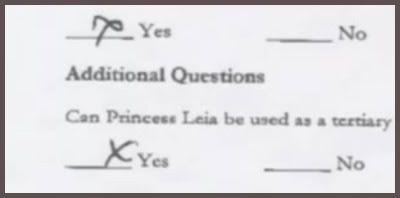
One last, quirky thing I saw in the feature was this... continuity checking. I really have never seen anything like it until now. From what can be plainly seen in the featurette above, the Creative Team first faxes question forms with questions like "Can Vader's apprentice be this or that?", and then The Man himself, George Lucas will check either a Yes or a No.
Despite all his faults and ideas, they treat the man like a god, as opposed to other franchises were the original creators of a show are mocked and laughed at. His ideas and inputs are like the Holy Grail - the Core Continuity. I find it kinda odd beyond reason actually, but its not really that different from what I am doing now with some of my own projects. All in all, it really made me wonder how more continuity-sensitive franchises are run.
I hope you had a good time reading this, and I hope you read the other posts in this blog. Feel free to leave some comments and suggestions!
 So while I develop Robotech concepts nobody in the actual Robotech world cares about, let me take some time to admire the franchise that is Halo. Three games, a batch of novels expanding the mythos, and a whole lot of merchandise tie-ins - even though I'm not a particular fan of the series, I can't help but admire the majesty and grandeur that Bungie has done in manufacturing this epic.
So while I develop Robotech concepts nobody in the actual Robotech world cares about, let me take some time to admire the franchise that is Halo. Three games, a batch of novels expanding the mythos, and a whole lot of merchandise tie-ins - even though I'm not a particular fan of the series, I can't help but admire the majesty and grandeur that Bungie has done in manufacturing this epic.
Yes, you heard me right, I'm not a big Halo nut. I've played the first game, and it didn't exactly impress me. The second one upped the scale a bit, but the gameplay isn't as life-changing as people seem to say it is (as compared to the first Half-Life). But looking at the hype build around this latest Halo, and the world its building around itself, I might actually learn to love this... game involving the 'Master Chief'.
Why? Aw man, just watch these two vids:
ARMS RACE Part 1 & 2
Who wouldn't fall in love with a franchise as cool as that? And they've also got a series of videos up on Gamespot with the message "Believe". It seems to be working, noh? Yes, some of the videos are a bit hammy/cheesy, often referring to this Great War (complete with a Brit's voice to add credibility to the narration) but I leave that up to you. It sure beats listening to some guy in some podcast saying "This franchise is in a great place right now, blah blah blah..."
Gamespot Link of "Believe"
They even got this old dude to play some fictional war veteran from the epic battle in Halo! The developers are really trying hard to sell Halo as this great epic. Is this a good concept? With the right budget, of course it is.
The trick to 'Epic' status:
- Have characters speak an inordinate amount of 'cool' one-liners
- Strong female leads that butts heads with strong male leads, and when male gains advantage, he looks cooler than ever
- Take your simple 3 note music theme, get a 300 piece orchestra, and have them play it
- Sweeping camera angles should all be set to wide, showing your sets as imagined by the Concept Designer
- Take as much ideas from sci-fi media (i.e. classic movies like Aliens, Starwars Original Trilogy, Star Trek, Serenity, etc.)
- Intergalactic politics / religions makes anything feel 'epic' (Force, Bene Gesserit, The Covenant Ruling Council)
- Create viral videos/promotional stuff and other 'alternative' marketing schemes
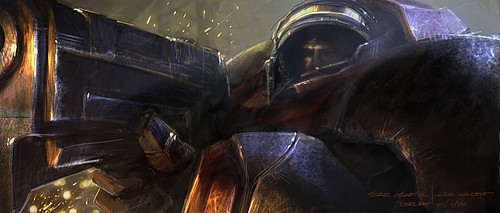
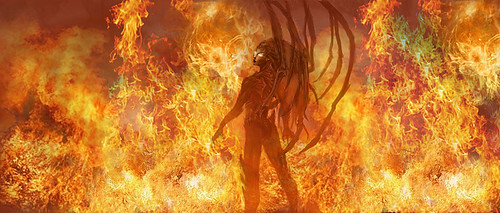


 Xavier Marquis... damn cool artist. He's currently a concept designer from Guerilla Games, and one of his biggest project has been Ubisoft's Killzone 2. I was already enamored by the gritty art style seen in the initial Killzone 2 trailers, which gave audiences a taste of the 'next-gen' Playstation's power - and I was fortunate enough to pick up the old June 2007 issue of ImagineFX which had the guy as a featured artist.
Xavier Marquis... damn cool artist. He's currently a concept designer from Guerilla Games, and one of his biggest project has been Ubisoft's Killzone 2. I was already enamored by the gritty art style seen in the initial Killzone 2 trailers, which gave audiences a taste of the 'next-gen' Playstation's power - and I was fortunate enough to pick up the old June 2007 issue of ImagineFX which had the guy as a featured artist.
It's a shame that technology will make these trailers look... quaint/tame in a matter of a few years. Still, one can always look at these clips and have some degree of fun.
The industry's emphasis on 'media res' - or having the concept artwork (coupled with strong lighting, composition, etc.) reflect the final result of whatever it is a company is trying to achieve, so yes, I have much to learn.
In future post, I'll be dealing with Concept Design 101, what to avoid, and what you could do.
Also be sure to check out (as of post time) Xavier's older works:
Xavier Marquis' Unupdated Webpage
Cool Killzone Trailers
 The man takes a lot of inspiration from anime, and that his favorite artist is Metal Gear Solid's Yoji Shinkawa. He states that whenever he wants to find inspiration, he need only look at his idol's artbooks. He claims that they both adhere to the idea of 'cliche +1' (which brings me back to my previous post on Space Marines and Supersoldiers)
The man takes a lot of inspiration from anime, and that his favorite artist is Metal Gear Solid's Yoji Shinkawa. He states that whenever he wants to find inspiration, he need only look at his idol's artbooks. He claims that they both adhere to the idea of 'cliche +1' (which brings me back to my previous post on Space Marines and Supersoldiers)"You can make something totally new and amazing, but with around 90 per cent based on common references" Pretty good words to live by as a concept artist.
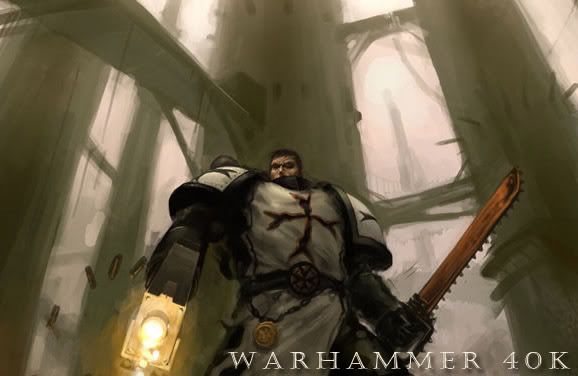
Introducing... Warhammer
Call me a newb to this whole Warhammer / Space Marine concept thing - but the lore is just so fantastic and inspired - even today. Originally published back in 1987 as a companion piece to the Warhammer Fantasy Battle, the franchise today seems cooler than ever. The concept of religious fanaticism and high-powered Space Marines in the 40th Century seemed to just click so well at the time, and its influence can be felt so many years later with hundreds of copycats lining up the market.
I actually never really cared for this universe until only recently thanks in part for my friend who showed me some of the books relating to the universe, as well as seeing a few sessions of folks playing the highly successful PC game Warhammer 40k: Dawn of War.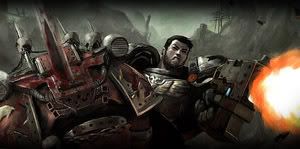
"In the grim darkness of the far future, there is only war."
War is fun, especially in science fiction, none more so for this universe. I've only read/heard bits of the franchise's epic scope, and how each race such as the Imperium of Man and the Orks, and even the later additions such as the Tau, the Necron all vie for power... but its all pretty heady stuff and I can't wait to read in my spare time.What is really awesome about Warhammer 40k is its iconic Space Marines. These guys are the genetically modified supersoldiers with oversized shoulderpads, armed with flamethrowers and high-powered rifles ready to "cleanse" the galaxy of heretics and enemies of the Emperor. But beyond Warhammer, the very idea of supersoldiers has influenced much of modern media - inspiring countless franchises in video games, novels, comics and television. Poppular franchises such as Starwars (ARC Troopers), Halo, Gears of War, Unreal, Starcraft have all taken this idea and twisted it as they saw fit.
- Supersoldier is a term often used to describe a soldier that operates beyond normal physical human limits.
- Supersoldiers are common in science fiction literature, films, TV programs, computer and video games, but have also made appearances in other related genres, such as military fiction and spy fiction.
- Many depictions of supersoldiers treat them as shock troops or heavy infantry, although others feature them as elite commandos or special forces personnel.
- Supersoldiers are usually heavily augmented, either through eugenics, genetic engineering, cybernetic implants, drugs, brainwashing, an extreme training regime (usually with high casualty rates, and often starting from birth), or other scientific and pseudoscientific means or a combination of any of those.

"Robotech" is my most favorite animated series. What is Robotech? A general description of the show would be that it is...
"... a science fiction franchise that was launched by an 85-episode adaptation of three different anime television series. The key ingredients in the show has been a mix between humanity's constant struggle against alien oppressors and cheesy soap opera drama."
Others with a more innate understanding of the series would describe the show as:
"... an old cartoon show from the 80's that depicts how war sucks alot. Humans are generally a war-like species, yet the war itself is sometimes a necessary evil. The aliens always start new war, therefore Earth is always in a position to claim 'Just Warfare'."
For some, the show is an utter abomination in every conceivable way. For folks such as myself, despite its nagging flaws, it is one of the best and most underrrated franchises in the market.
Ever since its release in the 1980's, the franchise has molded into something that is quite unlike its former self. Comics, novels, movies, role-playing games, have all gone out of their way to expand on the mythos in ways that are truly... unique. That may be well and good, but sort of has produced a niche fanbase that can't really agree on the "right" continuity of events, or such. In essence, everyone has their "own" version of Robotech.
It is my wish then to have this blog have periodical updates for my version of Robotech, tentatively titled "Rebuild of Robotech" Beyond this project though, I wish for this blog to cover all manner of interesting digital eye candy around the net, and beyond. How this entire blog all relates to Robotech won't really matter. This blog will serve as a repository of ideas from any kind of science fiction media I find interesting.
So enjoy!








